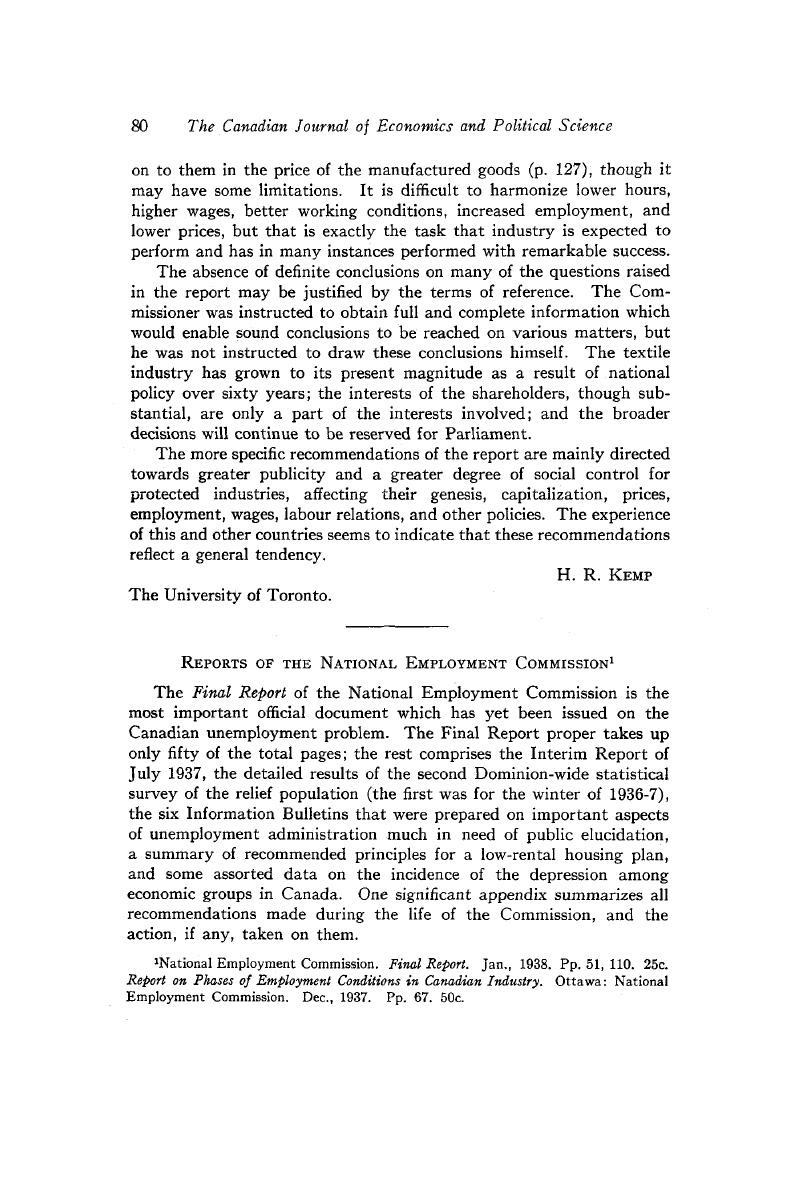No CrossRef data available.
Article contents
Reports of the National Employment Commission1
Published online by Cambridge University Press: 07 November 2014
Abstract

- Type
- Notes and Memoranda
- Information
- Canadian Journal of Economics and Political Science/Revue canadienne de economiques et science politique , Volume 5 , Issue 1 , February 1939 , pp. 80 - 86
- Copyright
- Copyright © Canadian Political Science Association 1939
Footnotes
National Employment Commission. Final Report. Jan., 1938. Pp. 51, 110. 25c. Report on Phases of Employment Conditions in Canadian Industry. Ottawa: National Employment Commission. Dec., 1937. Pp. 67. 50c.
References
2 The heavy burden of (presumably municipal) real estate taxation is referred to specifically. In the Interim Report mention is made of a study of taxation conditions being prepared for the Commission by an unnamed “independent body,” but this is not cited in the Final Report.
3 Cf. Arnold, Thurman W., The Folklore of Capitalism (New Haven, 1937)Google Scholar, chap. xii.
4 The method of tabulation prevents the abstraction of a more accurate figure than this; in the list of methods of hiring, “Employment Service” is indicated by 4 per cent of the firms, and “two or more methods” by 26 per cent. How many of these latter included the Employment Service is not stated.
5 Wynne, W. H., “The Burden of Obsolescence” (Canadian Chartered Accountant, vol. XXX, 04, 1937).Google Scholar This article analyses carefully the relations between depreciation and obsolescence, and summarizes the present position of Canadian income tax administration on the matter.


